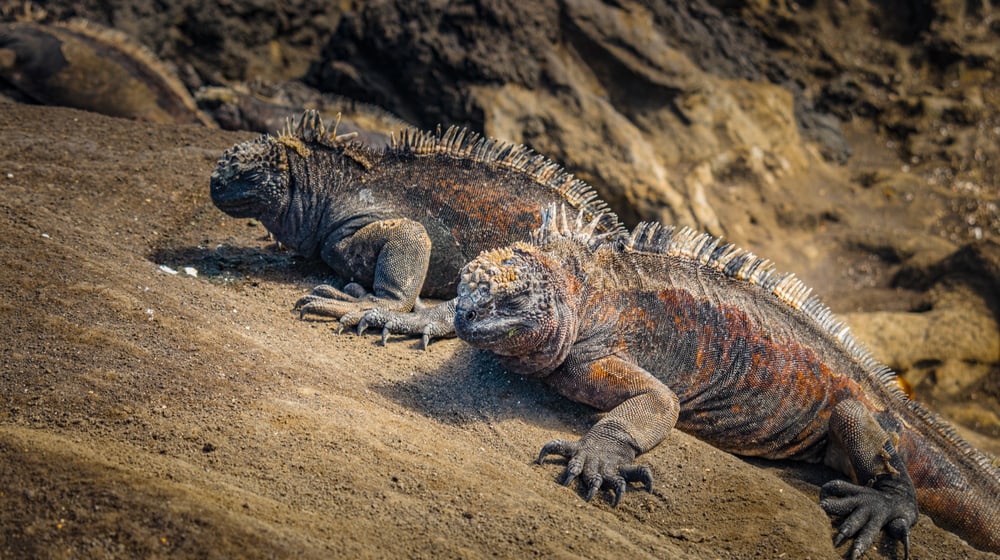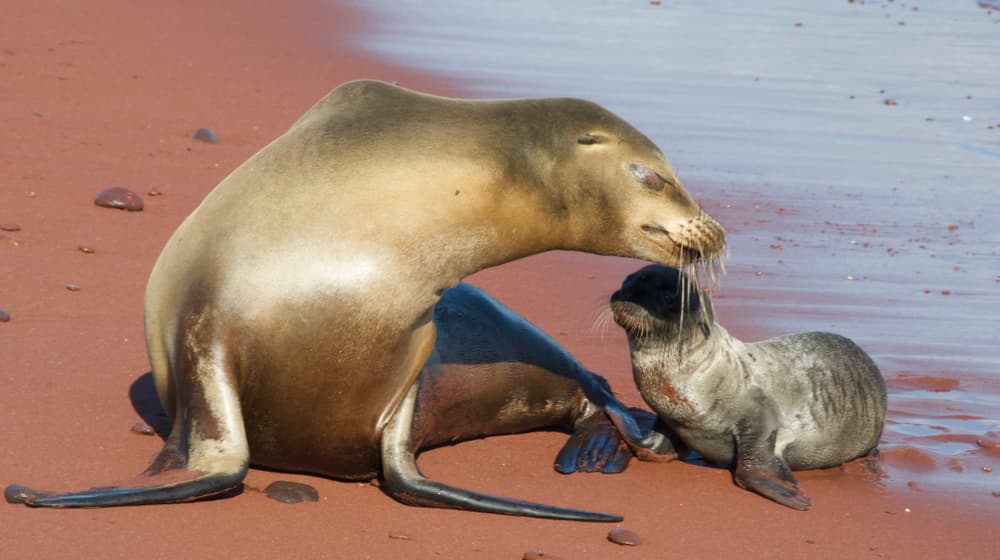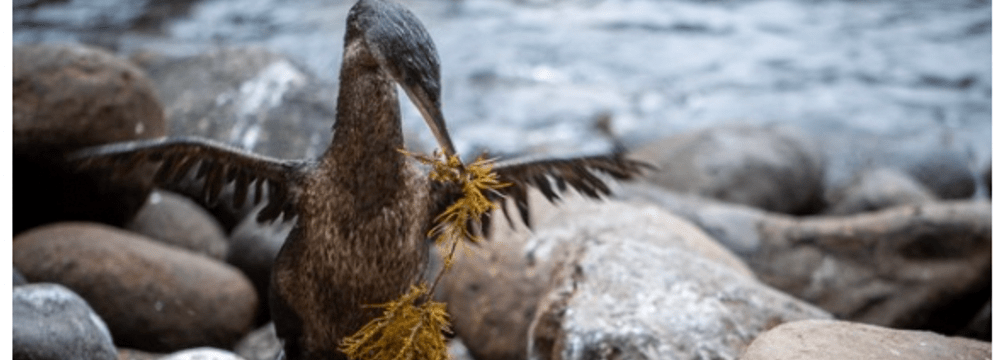
Census and health analysis of the marine birds of Galápagos
On the Galápagos Islands you can find many animals that only occur on this archipelago and are synonymous with the islands. The most famous here are certainly the giant tortoises, to which the archipelago also owes its name. But also, many bird species are endemic here, i.e. they can only be found on the Galápagos Islands. We are all familiar with various species of finches or mockingbirds through many projects we support.
Seabird species like the Flightless Cormorant (Phalacrocorax harrisi), the Galápagos Albatross (Phoebastria irrorata) or the Galápagos Penguin (Spheniscus mendiculus) are also not found anywhere else in the world. They are among the most extraordinary birds of the archipelago and are listed as endangered by the World Conservation Union IUCN.
The Galápagos Penguin
Basically, penguins live only south of the equator, making the Galápagos penguin the most northerly representative of its species. Strictly speaking, the penguins that breed on the northern coasts of Isabela even live in the northern hemisphere! Many people like penguins, perhaps because the curious birds with their short legs walk so cute and look nice on land.
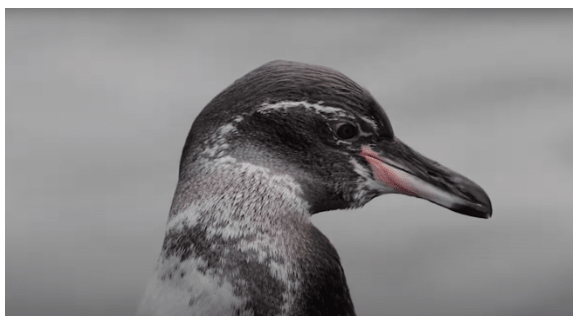
Galápagos penguin ©CDF
In the water, however, they are absolute swimming and diving acrobats – they are flying underwater. Yet most of us know little about the challenges these birds face in their habitat. Fishing poses a major threat to the penguins, as they become entangled in nets and perish miserably. But the constantly rising sea level also causes problems for the animals. Since the birds breed in caves on the coasts, it is becoming increasingly common for the nests to be flooded and for chicks or eggs to be washed away by the tides. Although attempts are now being made to offer alternative nesting cavities in higher cliffs, it remains to be seen whether and how long it will take for the birds to accept these options.
But the climate phenomenon El Niño, in which the cold deep-sea currents responsible for the great abundance of fish in the Galápagos marine reserve no longer reach the coasts of the archipelago and the penguins must abandon their nests or young because of a lack of food, is another problem. Therefore, in these years there are hardly any offspring, and the penguin populations decrease dramatically.
Cormorants that do not fly
The flightless cormorant also called the Galápagos cormorant, which shares its habitat with the Galápagos penguins, is a rather inconspicuous bird. While the wings of the penguins have changed during evolution to flippers that allow them to move quickly and elegantly in the water, the wings of the flightless cormorants have only shortened to short stubs. They do not need wings in their habitat to fly away from enemies, and when diving they were rather obstructive.
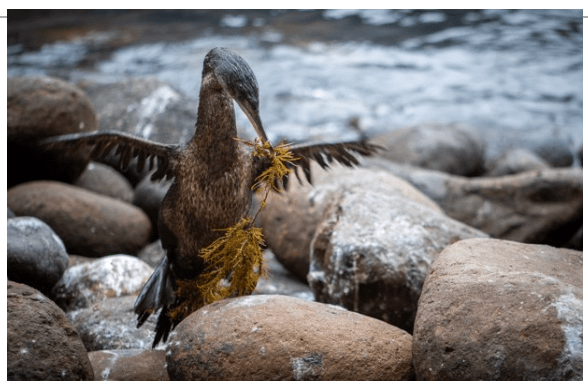
Flightless cormorant building a nest © Amy MacLeod
Human-caused environmental changes, such as introduced invasive species, have had a major impact on cormorants. When the first settlers brought domestic animals such as dogs and cats to the islands, this resulted in large losses in the population of flightless cormorants. Also introduced rats, had their share in this, since they prefer to eat the eggs or chicks.
The Albatrosses of Galápagos
The Galápagos albatross is an impressive bird that, apart from a few small groups, breeds on Española Island. These impressive animals are also strongly affected by environmental and climatic changes. Albatrosses are also facing problems due to the proximity of humans, especially in the fishing industry. The birds are perfectly adapted to fishing on the high seas, but they have found that it is easier to wait until fishermen pull their nets out of the water.
When the albatrosses then try to retrieve fish from the nets, they become entangled in them or inflict serious injuries that contribute to the severe decline in albatross populations compared to other seabird populations. Data supporting these observations have been collected in Peru for many years, but reliable data from Ecuador has been lacking.
Concrete measures
In principle, climatic phenomena have existed for 1,000s of years and animals have become accustomed to them during their evolution, because they are born into this system and learn to live with it. It is only problematic because the strength and frequency of El Niño periods change, and species take longer to recover from them.
Also, the "contact" with the fishing industry is dangerous for the different species in different ways, because in the Galápagos Marine Reserve (GMR) highly regulated fishing is allowed. In the case of the cormorants, positive development of the population can even be observed since the year 2000. How this happens is not yet clear. The researchers suspect that there has been a change in the habitat of the birds, which contributes to the fact that the cormorants permanently find more food and therefore regularly reproduce.
It is precisely these changes in the habitat of the animals, whether positive or negative, that must be observed and detected so that it is possible to permanently stabilize the populations of seabirds of the Galápagos Islands. For this purpose, long-term studies are indispensable.
This involves regularly counting, weighing, and tagging the birds with rings or tags. Cloacal swabs and blood samples are taken to screen the birds for parasites and other pathogens. In addition, body temperature, heart rate, and respiratory rate are measured. This allows the researchers to
build up a comprehensive database of clinical and ecological data on each species over the years, which can be used to show changes in the birds' health or habitat.
For example, the penguins on the small island of Mariela, off the west coast of Isabela, were found to be three to four times larger than animals from other colonies. Here it is very important to find out the cause of such variation.
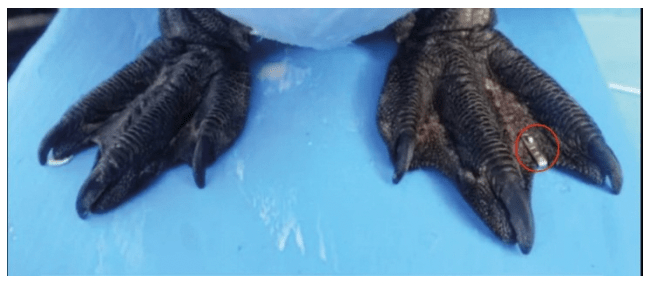
Ppenguin feet with tag© CDF
Please help us to continue the important monitoring of the seabirds of the Galápagos and thus protect the ecosystems that are crucial for the survival of the penguins, cormorants, and albatrosses.

Scan the QR code and experience how Gustavo and his team works.
Alternatively, you can use the following link https://www.youtube.com/watch?v=wP7k9nwY3jA
